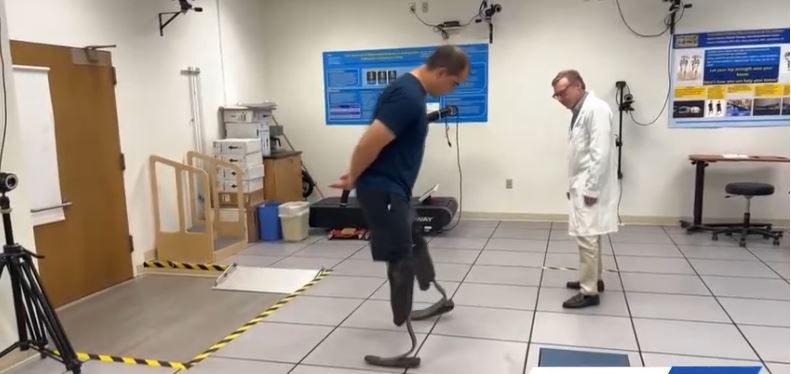Double amputee wears backward-facing prosthetics; researchers hope method could help others

By Breana Ross
Click here for updates on this story
BALTIMORE (WBAL) — Ross Holland discovered a unique way to wear his prosthetic legs by turning the feet backward.
“It’s so much more comfortable. It’s so much easier,” said Holland, a 34-year-old who lives in Gettysburg. “This kind of fluke turned into something I’ve never looked away from.”
Holland, who has been using prosthetic legs since a lawn mower accident at age three, struggled for years to find a perfect fit for his prosthetics.
“To stay up in legs, I needed the fit to be exactly right,” Holland said. “I needed the padding to be right. Any disruption would make it difficult to stay in the legs… I spent a lot of time in the wheelchair, so I would go to work in the wheelchair and then when I got home, I would put my legs on and go to the gym and go out with friends, that kind of thing.”
Holland experimented with turning the feet on his prosthetic legs backward while navigating obstacles and climbing at his gym, which led to improvement in his balance and energy use.
“The balance was a lot easier, like physically easy, less energy to use to just do basic things,” Holland said. “I almost immediately went from using my legs only in the evenings to more and more. For the last three and a half years, I haven’t used the wheelchair at all.”
Holland, eager to share his discovery, collaborated with his prosthetist and Dr. Scott Brown, chairman emeritus of the Rehabilitation Institute at Sinai Hospital, to conduct a study on the effectiveness of the approach.
“We were very much intrigued because he had come across a very novel approach to enhancing his ability to use his prosthetics to meet his functional needs,” Brown said. “We wanted to understand what it was about turning the prosthetic feet around that enabled him to be more effective at the high-level activity he was engaging in.”
Brown and his team in the ABBEL Research Division of the Rehabilitation Institute at Sinai did a gait analysis to learn more.
“It enabled him to have better posture and better placement of his center of gravity,” Brown said. “It enabled him to use his muscles more efficiently, and ultimately to exert less energy expenditure in performing those activities… We think we’re at the very beginning phase of being able to promote this notion for other patients.”
Holland hopes his experience will help other amputees.
“I struggled for three decades, most of three decades, to use my legs for a long time each day, and I’m still pinching myself in the morning when I wake up because the very first thing I do is put my legs on and then I have a 16-hour day, and then the very last thing I do is take my legs off before I shower and go to bed and to help any other amputee I’ve had experience with. I mean, I have won everything,” Holland said.
Brown and his team want to do a larger study with more patients to see if the backward-facing prosthetic that works for Ross will also work for other people.
Please note: This content carries a strict local market embargo. If you share the same market as the contributor of this article, you may not use it on any platform.